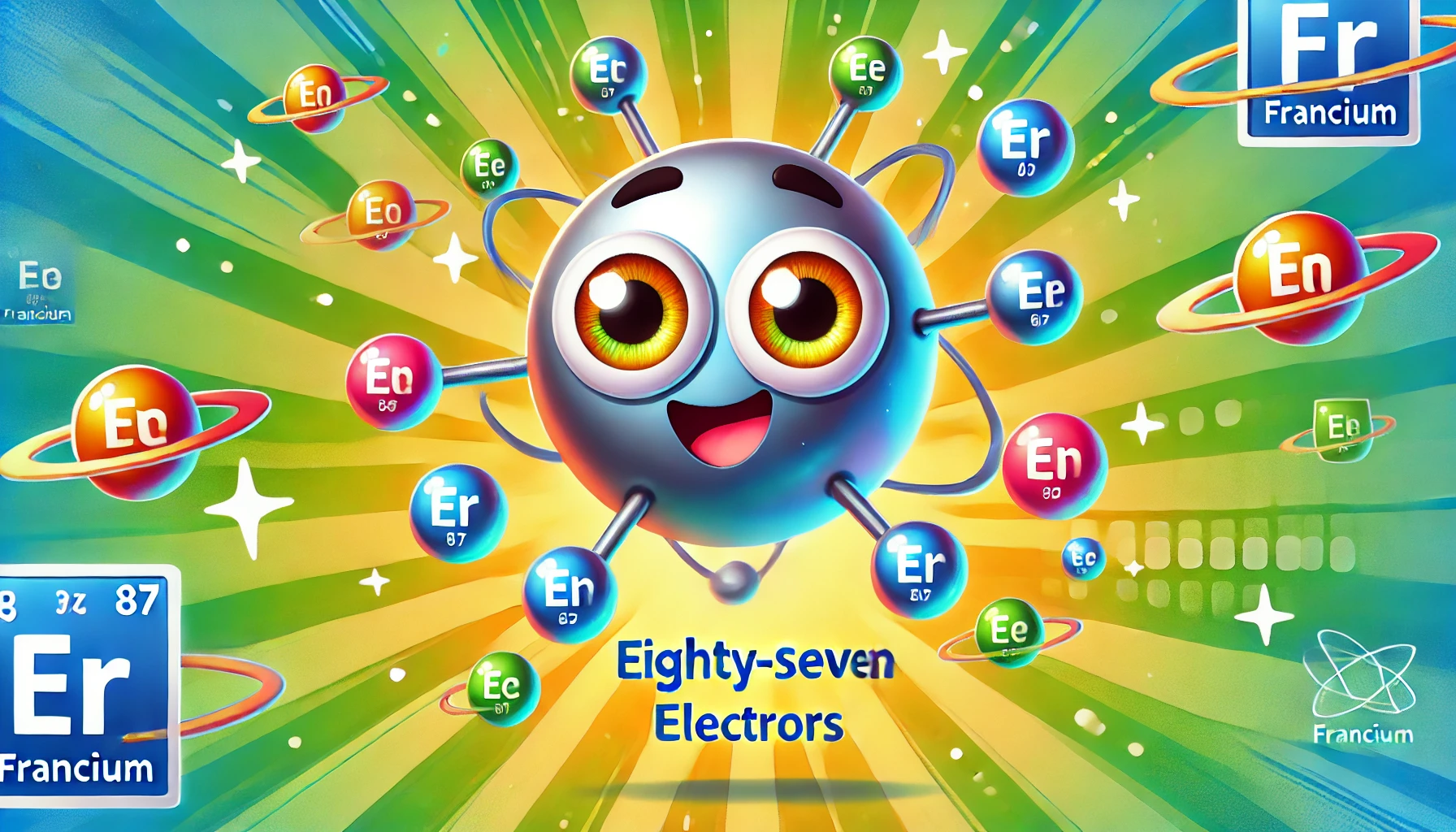Understanding Francium: Properties, Uses, Health Risks, and Fascinating Facts
Understanding Francium: Properties, Uses, Health Risks, and Fascinating Facts
Table of Contents
- Introduction to Francium
- Properties of Francium
- Uses of Francium
- Health Risks of Francium Exposure
- Interesting Facts about Francium
- Environmental Impact of Francium
- Conclusion
- References
Understanding Francium: Properties, Uses, Health Risks, and Fascinating Facts
Introduction to Francium Francium is a chemical element with the symbol Fr and atomic number 87. It is an extremely rare and highly radioactive metal that is part of the alkali metal group. This article explores the properties, uses, health risks, and interesting facts associated with francium, providing a comprehensive understanding of this elusive element.
Properties of Francium Francium is characterized by several distinct physical and chemical properties.
Physical Properties
- Appearance: Francium is presumed to be a metallic solid, but its appearance is largely unknown due to its extreme rarity and radioactivity.
- Density: The density of francium is estimated to be around 2.48 g/cm³.
- Melting Point: The melting point of francium is estimated to be around 27°C (81°F).
- Boiling Point: The boiling point of francium is estimated to be around 677°C (1,251°F).
Chemical Properties
- Reactivity: Francium is highly reactive, similar to other alkali metals, and is expected to react explosively with water.
- Compounds: Francium forms various compounds, such as francium chloride (FrCl) and francium hydroxide (FrOH), but these are rarely studied due to francium’s short half-life.
Uses of Francium Due to its extreme rarity and high radioactivity, francium has very limited practical applications. However, it holds potential in specific scientific research areas.
Scientific Research
- Atomic Structure Studies: Francium is used in scientific research to study atomic structure and behavior, as its heavy nucleus makes it interesting for understanding fundamental principles of physics.
Medical Applications
- Potential Radiotherapy: There has been some exploration into the use of francium isotopes for targeted alpha-particle radiotherapy, similar to astatine, but practical applications are limited by francium’s scarcity and radioactivity.
Health Risks of Francium Exposure Francium is highly radioactive, and exposure can pose significant health risks.
Inhalation and Ingestion
- Radiation Poisoning: Inhalation or ingestion of francium can cause severe radiation poisoning, with symptoms including nausea, vomiting, hair loss, and damage to internal organs.
- Organ Accumulation: Francium can accumulate in organs, leading to localized radiation damage and increased cancer risk.
Skin and Eye Contact
- Radiation Burns: Direct contact with francium can cause severe radiation burns on the skin.
- Eye Damage: Exposure to francium dust or vapors can cause eye damage and potential blindness.
Chronic Exposure
- Cancer Risk: Prolonged exposure to francium increases the risk of developing various cancers due to its high radioactivity.
Interesting Facts about Francium Francium has several intriguing aspects that make it an interesting element, despite its rarity.
Discovery
- Discovered in 1939: Francium was discovered by French chemist Marguerite Perey in 1939. It was named after France, Perey’s home country.
Unique Properties
- Rarest Alkali Metal: Francium is the rarest of the alkali metals and one of the least abundant elements in the Earth’s crust.
- Short Half-Life: Francium-223, the most stable isotope, has a half-life of only 22 minutes, making it extremely difficult to study.
Isotopes
- Radioactive Isotopes: Francium has no stable isotopes. There are about 34 known isotopes of francium, all of which are radioactive, with francium-223 being the most commonly encountered.
Environmental Impact of Francium Given its rarity and short half-life, francium has minimal environmental impact. However, safety precautions are necessary when handling this element to avoid radiation hazards.
Natural Occurrence
- Abundance: Francium is exceedingly rare in the Earth’s crust and is typically found in trace amounts in uranium and thorium ores.
- Production: Francium is often produced synthetically in particle accelerators for research purposes due to its scarcity in nature.
Pollution and Bioaccumulation
- Environmental Pollution: Francium does not significantly contribute to environmental pollution due to its scarcity and rapid decay.
- Bioaccumulation: Given its properties similar to other alkali metals, francium could theoretically accumulate in living organisms, but its extreme rarity and radioactivity make this unlikely.
Conclusion Understanding francium, its properties, uses, health risks, and interesting facts provides valuable insight into this rare and highly radioactive element. While francium has limited practical applications due to its scarcity and instability, it holds promise in specialized scientific research. Appropriate safety measures should always be taken when handling francium to minimize exposure and health risks. Its discovery, unique properties, and potential applications highlight the importance of ongoing research into this elusive element.

<ⓒ WizardMedics (wizardmedics.com)>






